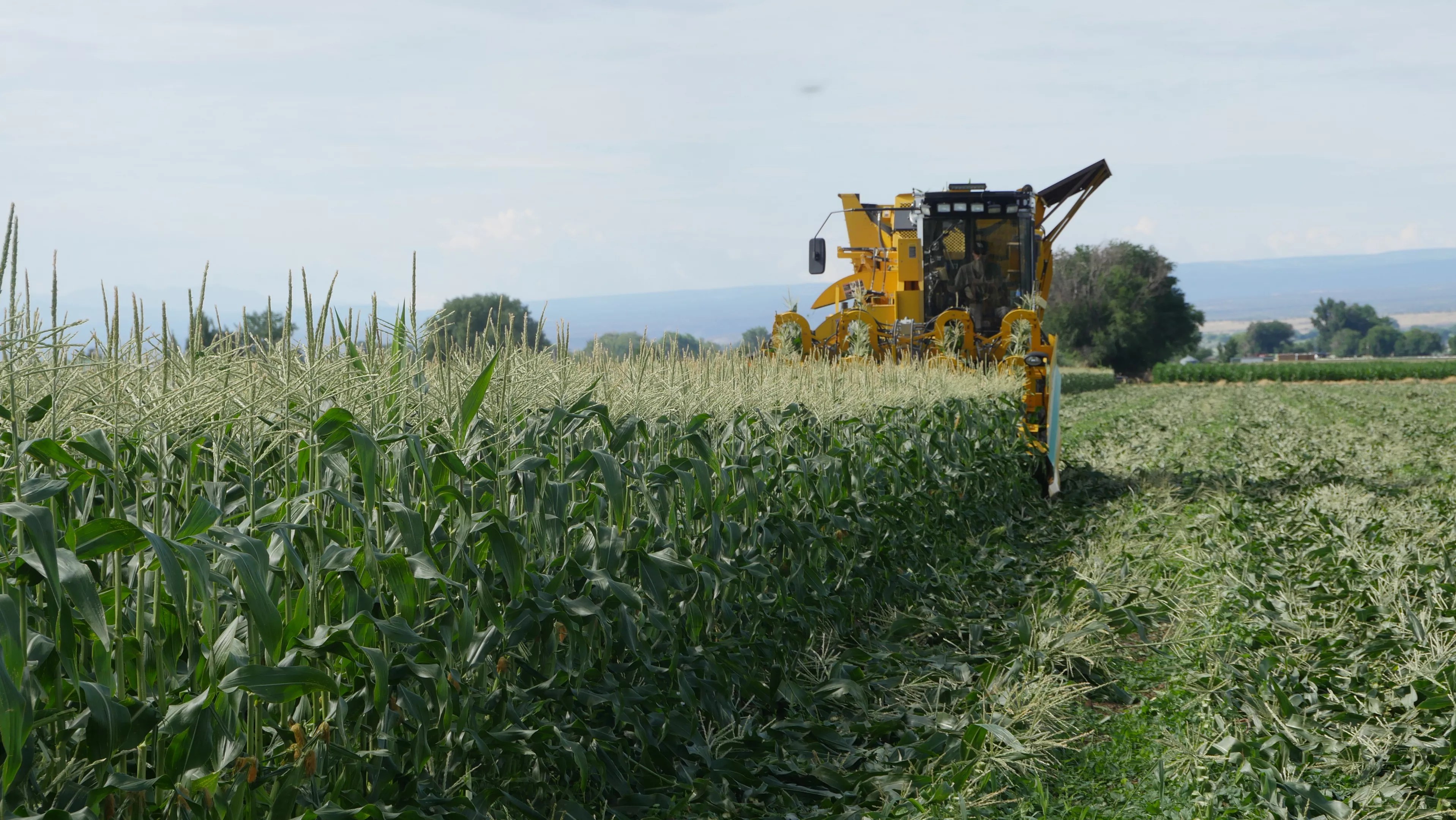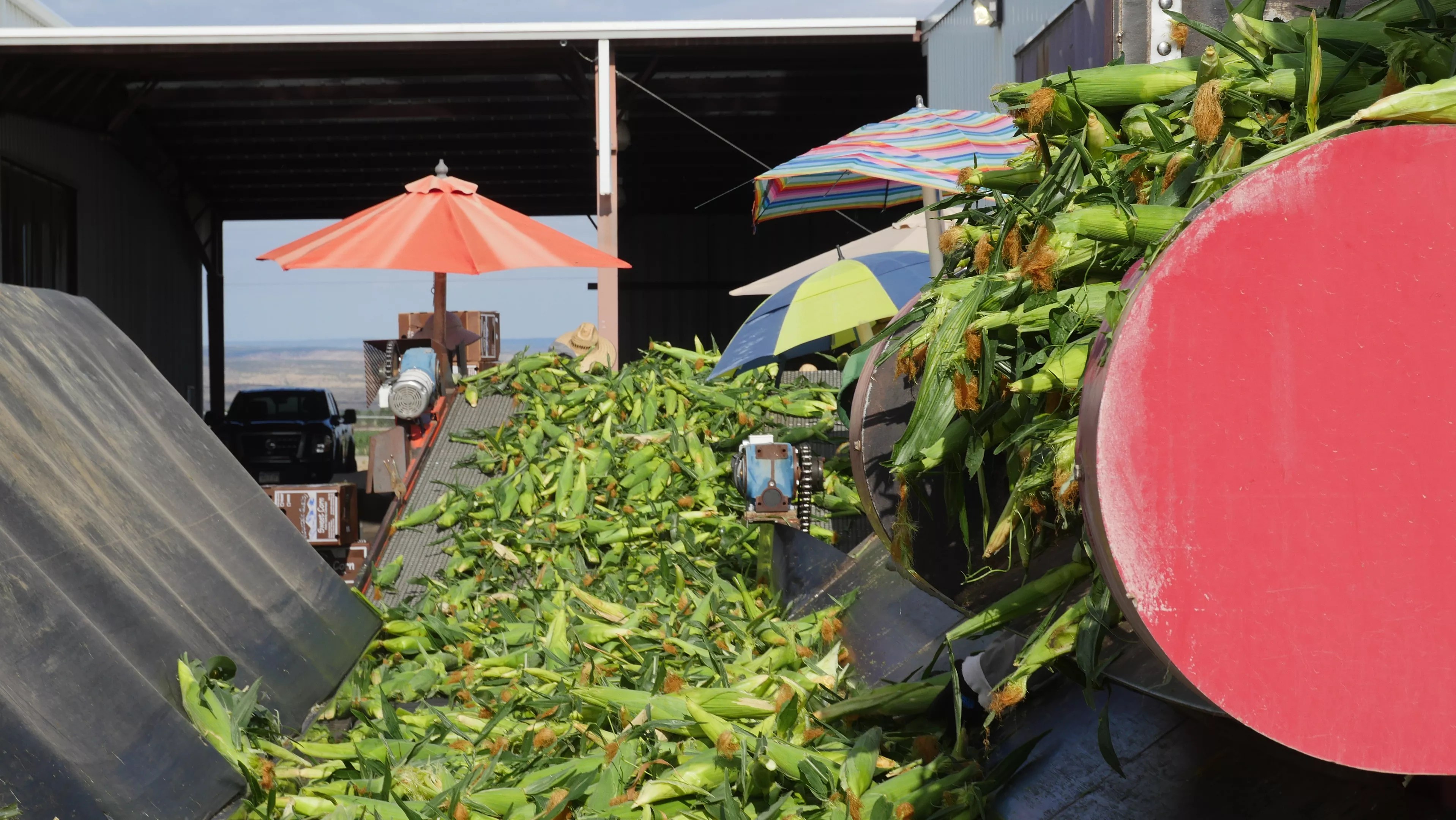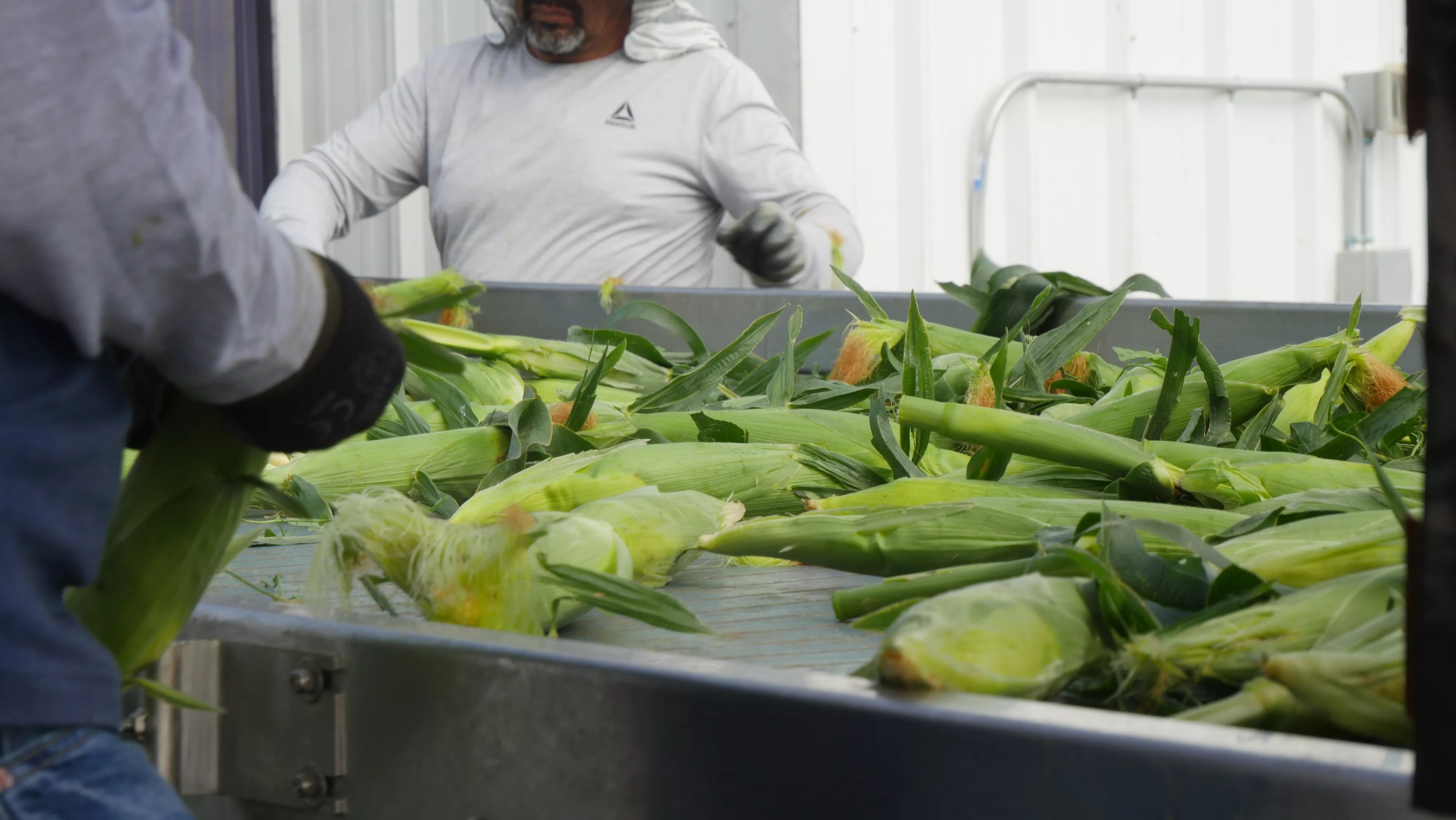
Gil Asakawa

Audio By Carbonatix
‘Tis the season…for Olathe sweet corn.
That’s the famous strain grown in Colorado’s Uncompahgre Valley. The crop is harvested starting in July and into September, then trucked from Western Slope farms to shops and markets along the Front Range, and increasingly across the country.
But it took time for the corn to hit this sweet spot. “A lot of it was trials and tribulations,” says Reid Fishering, president of Mountain Quality Farms, who studied in New York City and worked in the finance industry before returning to his literal roots to run his family’s farm outside Montrose. “You have to grow it, you have to tweak it, you have to try again. It’s not like suddenly one year, the crop became fully perfect sweet corn.”
Although Olathe sweet corn has an iconic reputation, the sweet, crunchy vegetable that gets Coloradans excited every summer is a relatively new phenomenon, a product of careful cross-breeding along with smart marketing and brand-building.
Denver, make your New Year’s Resolution Count!
We’re $10,000 away from reaching our $50,000 year-end fundraising goal. Your support could be what pushes us over the top. If our work has kept you informed and connected this year, please consider making a contribution today.
Fishering introduces Mike Alhberg, the “patriarch” of the farmers producing sweet corn, who uses some acreage at Fishering’s farm for sweet corn. Alhberg Farms, which was founded in 1946, grows a variety of other staples like regular “field” corn, alfalfa, onions and beans. But when it comes to the sweet stuff, Ahlberg says, “I’m the one left surviving that started planting corn that very first year.”

Reid Fishering, president of Mountain Quality Farms, checks for any ears of corn that need to be culled and sent as animal feed.
Gil Asakawa
Olathe sweet corn was first planted as a crop in 1978, when the region’s longtime primary crop, the sugar beet, was declining in popularity. A sweet seed had been developed by a corn geneticist, David Galinat, and sold through his Olathe-based company, Mesa Maize. This new crop slowly took root in the Uncompahgre Valley, where the summer days are long and hot and the nights cool – perfect for making the corn sweeter without turning into starch.
By the mid-1980s, Olathe sweet corn had become a regional star. John Harold, who had been selling sweet corn out of his truck locally, started Tuxedo Corn Company in 1986; in 1987 he trademarked the name “Olathe Sweet” to shout the corn’s flavor profile and to embrace its geographic roots. That move turned Olathe sweet corn into a now-recognizable brand.

Mountain Quality Fams in Delta, where the hot days and cool nights produce delicious sweet corn.
Gil Asakawa
In 1990, the town of Olathe began celebrating its famous export with an annual Sweet Corn Festival; it has since moved to the nearby, larger city of Montrose, where it will mark its 35th year on August 23 with live music, vendors and, of course, lots of sweet sweet corn, offered every way imaginable. Kroger, the supermarket chain that owns the King Soopers stores along Colorado’s Front Range, is a sponsor; not surprisingly, so is Tuxedo Corn Company.
Bugging out
Just as sweet corn was catching on, the bug bit. Moths lay eggs in the silk that sticks out from atop ears of corn, as well as on other vegetables and fruits; when the larvae hatch as earworms, they eat part of the tops of the corn. That’s why some ears of corn that make it to the store might be missing kernels in the top few rows.
But earworms were not a significant problem until climate change brought milder winters to the region, and there was no killing cold to eliminate the moths. In 2023, the worst year for earworms, up to 40 percent of Colorado’s sweet corn crop was discarded. Most of the damaged ears were culled from those being boxed and shipped, because the untouched corn could still be used for freezing or canning, with the affected part discarded or sold at a discount as livestock feed.
Farmers have employed various tactics to fight earworms. Spider venom, a natural pesticide, has been used, though Fishering says the earworm situation this season hasn’t been bad enough to call for that.

Sweet corn on Mountain Quality Farms is harvested in the morning to be sorted, packed and shipped within hours.
Gil Asakawa
Farmers are more optimistic about using another bug, anyway. Colorado’s Biocontrol Office at the eighty-year-old Palisade Insectary is experimenting with sending tiny wasps over acreage holding sweet corn to seek out and lay their eggs in the earworm eggs, thus preventing the caterpillars from hatching. The experiment is in its early stages, but Dan Bean, Insectary program manager, says that millions of the wasps have been let loose in a test on a plot of Tuxedo’s corn. “A problem with the corn earworm issue is the earworms are now resistant to most pesticides,” he notes. “We’re working on biological controls. And biological controls are living organisms that attack their natural enemies.”
These efforts to fight the worms are natural – the key word is “biological” – solutions that do not involve chemical pesticides or insecticides. They are organic agents, and while they’re not cheap, responsible farmers are focusing on them to battle the bugs.
“We feel like we can beat it,” Fishering says. “I don’t know if that’s a fool’s errand. Going back to when my parents were first doing this, we didn’t have the issues that we’re seeing today in terms of the population. I think everyone thinks, what are the root causes? Is it climate change, or is it because some moth made it over on some sort of container ship, made it to L.A. or someplace and then proliferated? I guess it reproduced with a moth that was there, and then you get this gene, and that’s that.”

Sweet Corn drops out of the harvester onto a sorting belt for farm hands to inspect each ear for quality.
Gil Asakawa
But that’s not the end of the battle. “We’re losing between 10 to 30 percent of our corn, we’re losing yield, and our profit margins are so tight already,” Fishering points out.
Fishering’s father began farming after going to a kibbutz in Israel. “He fell in love with irrigated farming, so when he got back to the states he enrolled in Colorado State for an agronomy degree,” he says. At first, the elder Fishering worked for Holly Sugar in Montana, but then he and his wife settled in Montrose because they liked the warmer climate. “My mom and dad worked for an ag nonprofit for the regional economic development agency to see what alternatives the farming community could attempt to replace the wheat and barley crops,” he says. “The community attempted broccoli, lettuce and a sweet corn variety from a local seed grower.”
Eventually, “together with other community members and farmers,” he adds, “they helped launch Olathe sweet corn from our valley.”
Going to market
Sweet corn has gone nationwide over the years. “We actually ship all the way to Virginia Beach, and then we go to L.A., so we go coast to coast,” says Fishering. “We have, you know, twelve different grocery chains, they’ve been with us for thirty-odd some years, including Kroger.” Whole Foods Market also buys Olathe sweet corn, he notes.
Sweet Corn is grown in many states; Colorado competes with Nebraska, California, Wisconsin and Indiana, but this state’s sweet corn has particular fans. In the Uncompahgre Valley, 23 families grow sweet corn. According to CSU’s Western Colorado Extension bulletin, sweet corn production added up to approximately $11.8 million last year with just 4,000 acres planted. Over a million acres of corn overall were planted in Colorado, the U.S. Department of Agriculture numbers show.

Sweet corn being inspected.
Gil Asakawa
As he walks through his operation, Fishering explains that the harvest has been slow this season. “We don’t know what it was with the weather, but the corn has been a little delayed this year,” he explains. So every day, he walks through his acreage, checking on the crop. While farmers have no control over weather, they’re accustomed to adjusting their operations to deal with Mother Nature.
Members of his crew, which includes laborers and members of their families who’ve worked for the farm for decades (mostly immigrants, but all with legal documentation, he notes), manually inspect all the corn as it arrives from the fields for worms, then send it to a packing area to be placed into boxes, chilled with crushed ice, then stacked and loaded into trucks for drives around the country.
Fishering and Ahlberg can tell from experience which plots are ready to be harvested. “It is nothing for Mike and I, because we’re constantly going out and checking out our next three sets of fields to know where we stand in terms of what’s going to be the next one we’re going to pick,” Fishering says. “So it’s coming out of the field, and then it’s on this conveyor there.”

Boxes of sweet corn ready to be loaded into trailer trucks to be taken to stores.
Gil Asakawa
The goal is to get the corn to its destination in a matter of hours, to preserve its maximum sweetness.
Despite the challenges, Fishering is happy to be able to deliver sweet corn to the consumers who crave it every summer, and to stick around for what could be a better haul next year. He has the farmer’s eternal optimism for the next season, the next crop. “You know, the future is yet to be determined,” Fishering concludes. “I mean, I think we’re a pretty resilient bunch.”
The Olathe Sweet Corn Festival runs from 9 a.m. “til the cows come home” on Saturday, August 23, at the Montrose Rotary Amphitheater in Cerise Park; find more information at olathesweetcornfest.com.